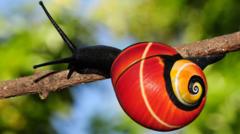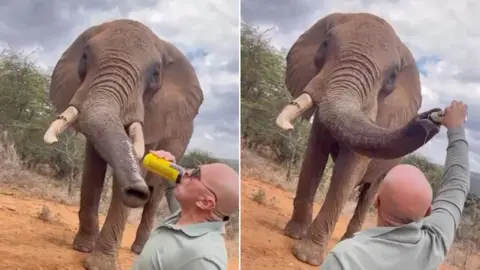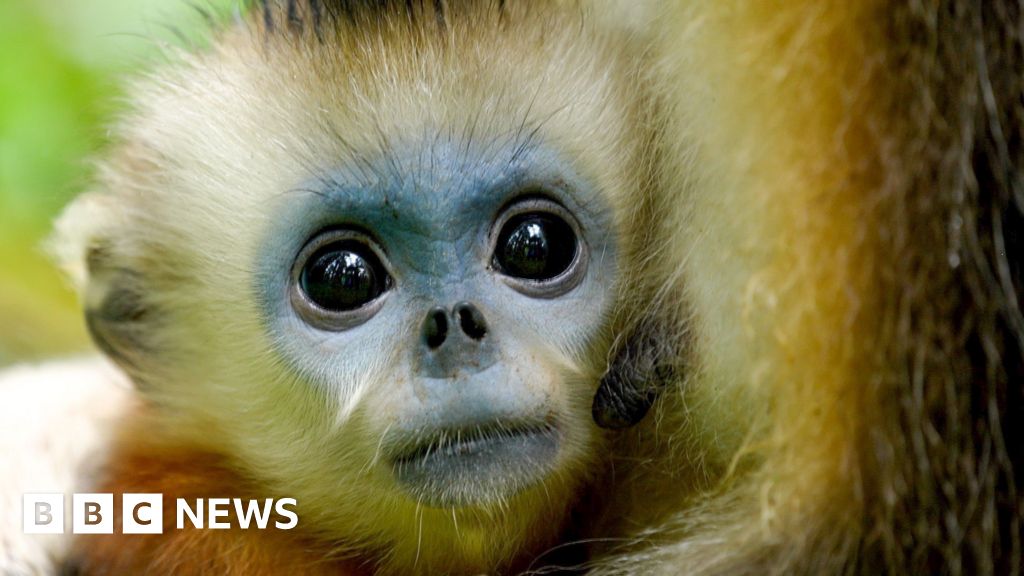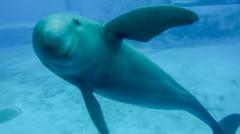In Eastern Cuba, researchers have launched an ambitious project to save the stunning Polymita tree snails, renowned for their vividly colorful and intricately patterned shells. Sadly, their beauty has made them prime targets for collectors, compelling conservationists to act in the face of increasing endangerment. Six known Polymita species, particularly the critically endangered Polymita sulphurosa, are on the verge of extinction due to illegal shell trade and habitat erosion.
Prof. Angus Davison, an evolutionary geneticist at the University of Nottingham, highlights the paradox: "Their beauty attracts people who collect and trade shells, and yet this is what's endangering them." He warns that even a small number of these snails taken for trade can significantly impact their populations in the wild.
Although regulations exist under the Convention on International Trade in Endangered Species, enforcement challenges remain. While it's illegal to export the snails or their shells from Cuba without permits, selling the shells abroad is still permitted, further complicating conservation efforts.
Collaborating with conservation biologist Prof. Bernardo Reyes-Tur from Universidad de Oriente, the team is determined to delve into the genetic makeup of these snails. Despite facing challenges, such as power outages in Cuba, Prof. Reyes-Tur has been breeding Polymita snails at home. "It's challenging, but they're doing well," he states, emphasizing the need for controlled environments to ensure their survival.
At the University of Nottingham, genetic studies are undertaken using cryogenic freezers to preserve essential biological samples. This research aims to ascertain the total number of species and their genetic relationships, unraveling how these patterns evolve. The ultimate goal is to gain insights that could inform conservation strategies before these stunning creatures slip into extinction.
As Prof. Davison notes, "Eastern Cuba is the only place in the world where these snails can be found. We hope to contribute to their conservation through the genetic information we gather." The mission highlights the urgency of protecting these ecological treasures amid growing threats.
Prof. Angus Davison, an evolutionary geneticist at the University of Nottingham, highlights the paradox: "Their beauty attracts people who collect and trade shells, and yet this is what's endangering them." He warns that even a small number of these snails taken for trade can significantly impact their populations in the wild.
Although regulations exist under the Convention on International Trade in Endangered Species, enforcement challenges remain. While it's illegal to export the snails or their shells from Cuba without permits, selling the shells abroad is still permitted, further complicating conservation efforts.
Collaborating with conservation biologist Prof. Bernardo Reyes-Tur from Universidad de Oriente, the team is determined to delve into the genetic makeup of these snails. Despite facing challenges, such as power outages in Cuba, Prof. Reyes-Tur has been breeding Polymita snails at home. "It's challenging, but they're doing well," he states, emphasizing the need for controlled environments to ensure their survival.
At the University of Nottingham, genetic studies are undertaken using cryogenic freezers to preserve essential biological samples. This research aims to ascertain the total number of species and their genetic relationships, unraveling how these patterns evolve. The ultimate goal is to gain insights that could inform conservation strategies before these stunning creatures slip into extinction.
As Prof. Davison notes, "Eastern Cuba is the only place in the world where these snails can be found. We hope to contribute to their conservation through the genetic information we gather." The mission highlights the urgency of protecting these ecological treasures amid growing threats.


















